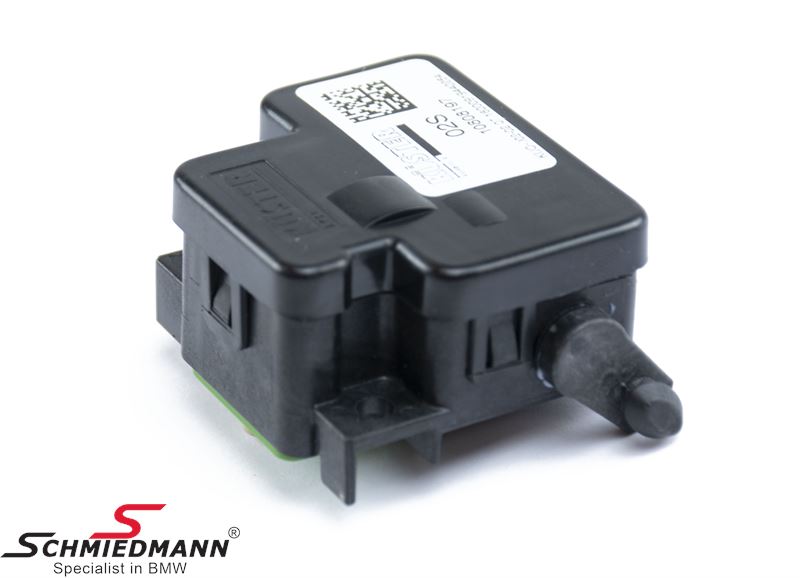If we're just talking about the lock, it should be fine to remove from a 'random passerby' safety standpoint. As soon as the button on the EVSE cable handle is pressed to disengage the latch, the EVSE should cut power.
However, removing the lock would
allow a random passerbys to unplug your car for any reason including theft of your OUC or just general hooliganism. After a long day at work, coming out to a flat battery could be a longer fix than a flat tire depending on how far you need to drive.
As to our good friend the DRIVE UNIT POWER SOCKET LOCK (aka 61-13-6-805-424 for Americans), getting to it is fairly difficult but once you do, defeating it seems it could be fairly trivial. I replaced mine so here are some photos.
First note: it is sealed with some adhesive, probably to make it waterproof but it also means: don't expect to get it open without breaking it unless you know how to defeat the sealant (I chose the "break it" approach).
The back/top/lid holds some of the gears in place, for whatever that's worth.
The lock solenoid is entirely plastic and driven forward/backward by an oddly shaped gear. This gear also presses on a momentary sensor when fully engaged which I would suspect tells the car that the lock is engaged.
From what I can see, it would seem plausible that removing the solenoid alone would trick the car into thinking everything is working fine but without the lock actually being there.
The biggest question mark may be DC Fast charging which will only start if the handle is locked. Does the DC Charger actually know this somehow, or does it reply on the car to report whether the lock is engaged?
Here's the inside:
The solenoid comes out pretty easily.
Lord Varys' reaction when...
Weird shaped gear with built in lever. Sensor/button in the top left.
Solenoid removed. You can see where the gear lever is pressing the button.
It seems you could glue the cover back on and put it back in the car and the very intelligent i3 would be none-the-wiser that it can no longer lock the charge cable handle to the car.
Disclaimer: I have not tried this. I replaced my DRIVE UNIT POWER SOCKET LOCK with a new DRIVE UNIT POWER SOCKET LOCK and it works well (at least for now). Also, I agree BMW should have made it user-selectable whether the lock engages or not. Sometimes I want it, sometimes I don't.




















![300W Car Power Inverter 12V to 110V,PiSFAU DC to AC Car Plug in Adapter Outlet with Multi USB[24W USB-C] /USB-Fast Charger(24W) Car Inverter,Car Charger for Laptop Vehicles Road Trip Essentials](https://m.media-amazon.com/images/I/41-KedJShYL._SL500_.jpg)
































